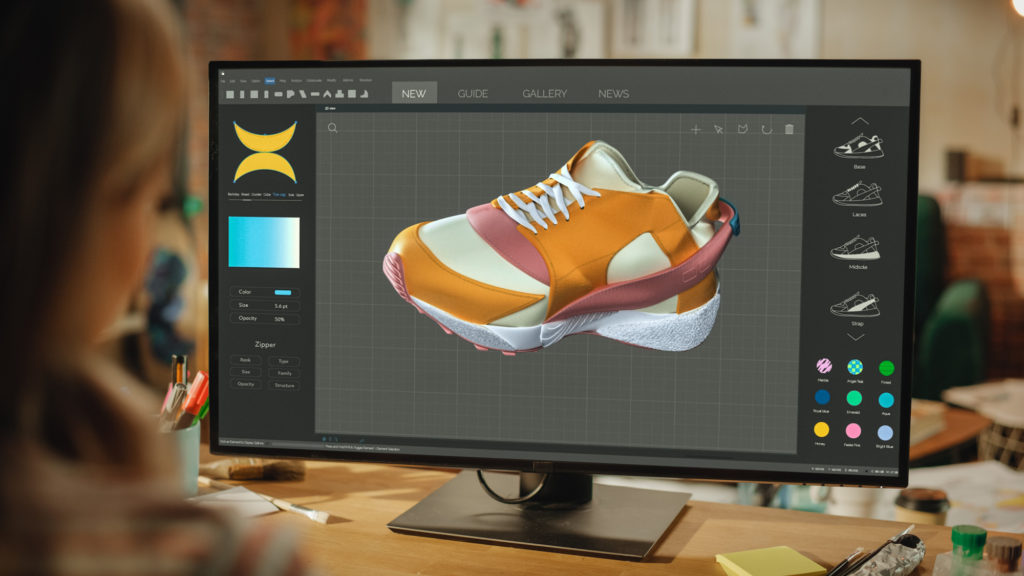Distinguishing your eCommerce and creating a remarkable shopping experience for your customers can be quite challenging. It’s for this reason that thriving businesses use three-dimensional (3D) modeling in their online platforms. Integrating 3D modeling into your eCommerce platform can give your customers an even more immersive and engaging shopping experience.
Take STEP files as an example. Also known as STP, STEP is a particular kind of 3D file format that can produce realistic depictions of products. It allows customers to examine them from various angles and zoom in to see the details. By utilizing such files, you can create high-quality 3D models that display your products in a manner that 2D images can’t emulate.
If you aspire to give a competitive edge to your eCommerce platform, 3D modeling represents an exceptional technique. So, learn to integrate it and elevate your business to the next level by reading the valuable steps below.
1. Choose A 3D Modeling Software
Choosing suitable 3D modeling software is imperative to creating 3D models that astound your customers. And numerous well-known options are available, each with its strengths and drawbacks.
When deciding on 3D modeling software, various aspects exist, such as your expertise level, the product complexity, and your budget. Free software may be the best option if you’re starting. However, if you necessitate more cutting-edge features, you may have to allocate your resources to pricy software.

2. Create 3D Models Of Your Products
Once you’ve decided on your 3D modeling software, next is to develop your products’ 3D models. While it may appear daunting, with practice and the appropriate tools, you can create high-quality 3D models to impress your customers.
The process of 3D modeling encompasses various steps, including developing a fundamental shape, augmenting details, and adding texture to the model. Attention to lighting and shading is essential to produce a realistic representation of your product. Utilizing textures and materials can also give life to your model.
Moreover, observing the minutiae is crucial to creating a lifelike 3D model. Ensure you incorporate all necessary aspects of your product, such as buttons, zippers, and stitching. Dedicate time to examining your product and understanding its distinct features to build an accurate representation.
3. Use 3D Models In Your eCommerce Platform
Depending on your platform and particular requirements, various methods exist for employing 3D models in your eCommerce platform. One option is to integrate 3D models directly into your product pages. This approach enables customers to view the model in 3D and engage with it by zooming in and rotating it. You can accomplish this type of integration by utilizing plugins or adding code to your eCommerce platform.
An alternative is to create interactive 3D product configurators. These enable customers to personalize their products in real time and observe the changes in 3D. This type of integration can be more complex. Nonetheless, it can offer an exceptionally unique and engaging shopping experience.
Furthermore, you can utilize 3D models in promotional materials, like social media advertisements or email campaigns. This strategy can showcase your products in a manner that’s distinct from the competition and catches the attention of potential customers.
4. Optimize 3D Models For Web Use
Optimizing your 3D models for web usage is crucial to guarantee a swift and seamless customer shopping experience. The inconvenience of slow eCommerce platforms caused by bulky file sizes Can lead to missed sales opportunities and customer irritation.
That said, various techniques are known to downsize the file size of your 3D models based on your specific needs. One of the tactics is to streamline the model by eliminating unnecessary elements or decreasing the polygon count. Another strategy is to use compression techniques.
Using efficient file formats can also help reduce file size. For instance, the Gene transfer format is purposely built for 3D models and optimized for web use. You can also utilize other formats like OBJ or FBX, but they may need further optimization for web use.
In addition, context is crucial when using 3D models. If you plan to display the models on mobile devices, you must optimize them for smaller screens and lower processing power. This approach may include decreasing the model’s complexity or employing lower-resolution textures.
Conclusion
The rapidly increasing availability of 3D modeling tools and eCommerce platforms provides an exceptional opening to incorporate 3D modeling into your online business. Using 3D models in your marketing materials and product pages can help you differentiate yourself from your competitors and seize the interest of prospective customers. Nonetheless, note that the most crucial aspect of eCommerce still lies in the quality and excellence of your products and service.
















